POLTERGEIST Deciphered: The Story Behind the Seminal Horror
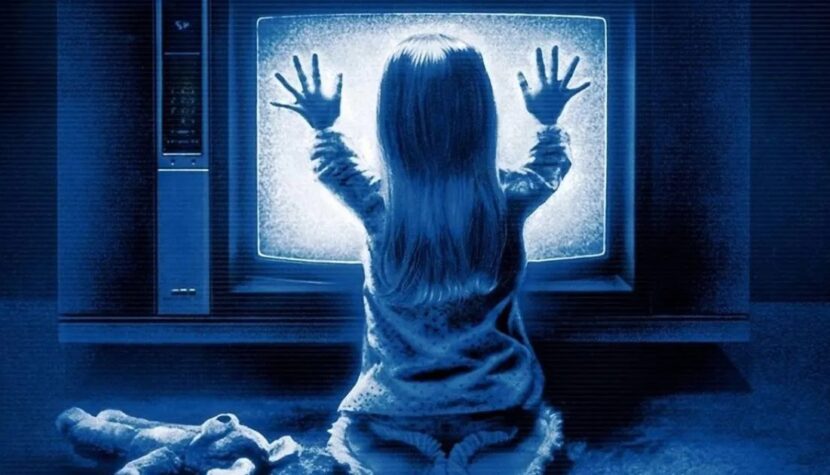
Few remembered his early drama The Sugarland Express (1974), especially since just a year later, Spielberg terrified the world with Jaws. He then broke the stereotype of bloodthirsty aliens by introducing friendly extraterrestrials in Close Encounters of the Third Kind, discovered his love for madcap grotesque in 1941, and finally formed Hollywood’s best tandem with Lucas, launching the Indiana Jones series.
On one hand, there was horror; on another, a warm fairytale quality; on a third, comedy; and finally, on the fourth, a grand adventure. Spielberg effortlessly glided across multiple genres, squeezing the maximum appeal out of each. Despite his immense talent, which translated into profits Hollywood had never seen before, the early 1980s were a turbulent period for him. The criticism that rained down on him from all sides for 1941 significantly tarnished his reputation as the golden boy of the Dream Factory. The production of Raiders of the Lost Ark was more Lucas’s work than his, his personal life was marked by emotional turmoil, he was taking his first steps in the industry as a producer, and Columbia Pictures was adamantly demanding a sequel to Close Encounters of the Third Kind. Poltergeist
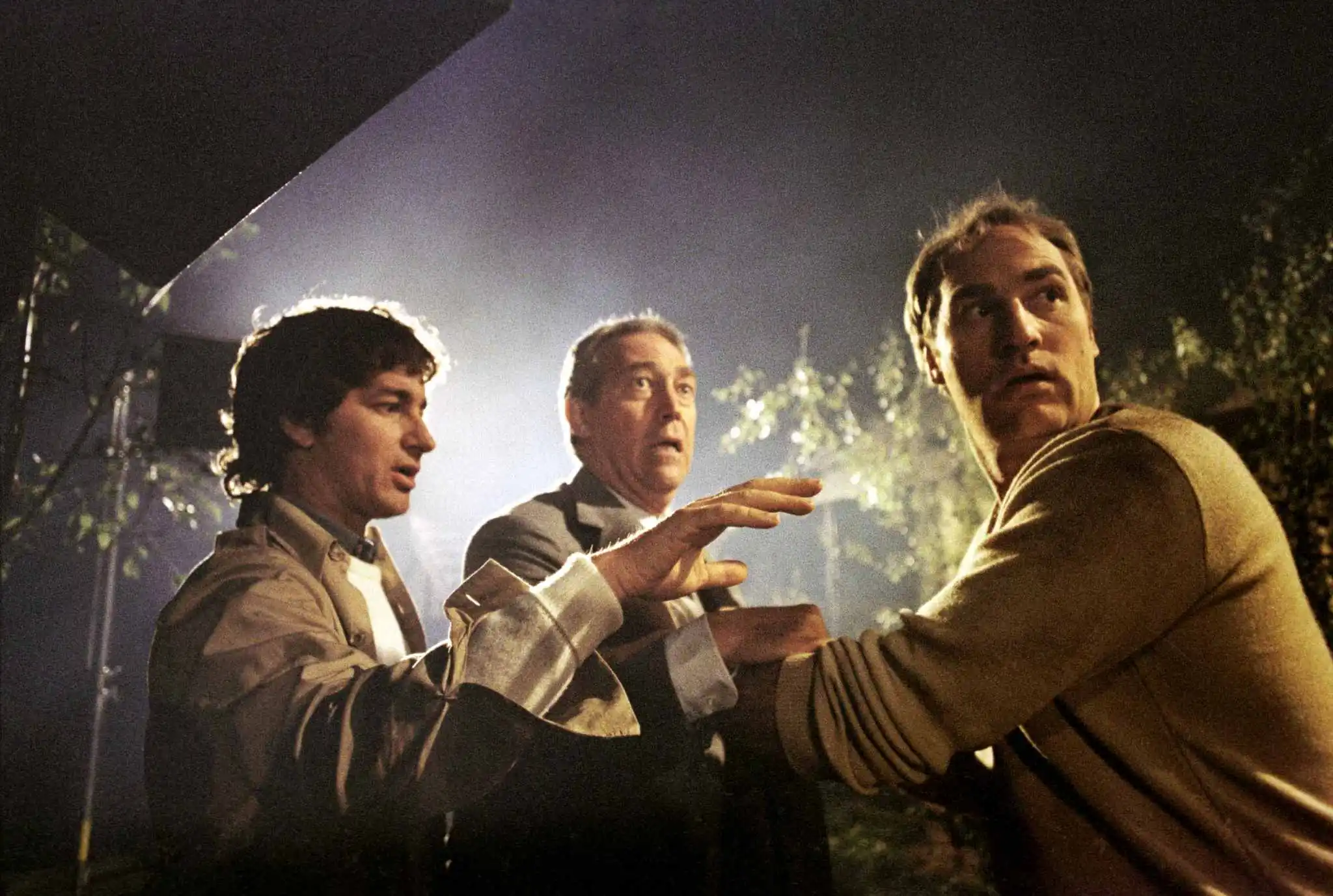
The special edition from 1980, which Spielberg re-edited and added a few scenes to, wasn’t enough for them. They wanted a true sequel. To appease them, Spielberg drafted an outline called Night Skies, a decidedly horror-style story about aliens haunting an ordinary American family. However, at the same time, he already had a completely different concept ready, one that was the polar opposite in tone: E.T.
Frank Price, the head of Columbia, didn’t want to hear about a children’s fairy tale, so an irritated Spielberg took the Night Skies script to MGM (the two had disliked each other for a long time, which is why Spielberg had clauses in his contracts excluding collaboration with Price). Since the preliminary work on E.T. had entered a decisive phase, Spielberg made two important decisions. To avoid making two movies about aliens, he reworked Night Skies into a story about malevolent spirits (somewhat reminiscent of his earlier youth film Something Evil, 1972), and he also decided to forgo directing in favor of Tobe Hooper, the creator of the cult slasher The Texas Chainsaw Massacre.

The quiet home of the Freeling family suddenly became a battleground for poltergeists, mischievous spirits. Initially mysterious and humorous situations took a dramatic turn when 5-year-old Carol Anne, the youngest daughter, was abducted “to the other side,” and her desperate cries for help were only audible through the television displaying static. The distraught parents called in specialists in paranormal phenomena. However, it was only Tangina, a medium, who could effectively confront the evil forces. Her knowledge and the determination of Carol Anne’s parents led to a confrontation with the dark forces lurking in the children’s room. But they faced an even bigger surprise: a graveyard where their house was built…
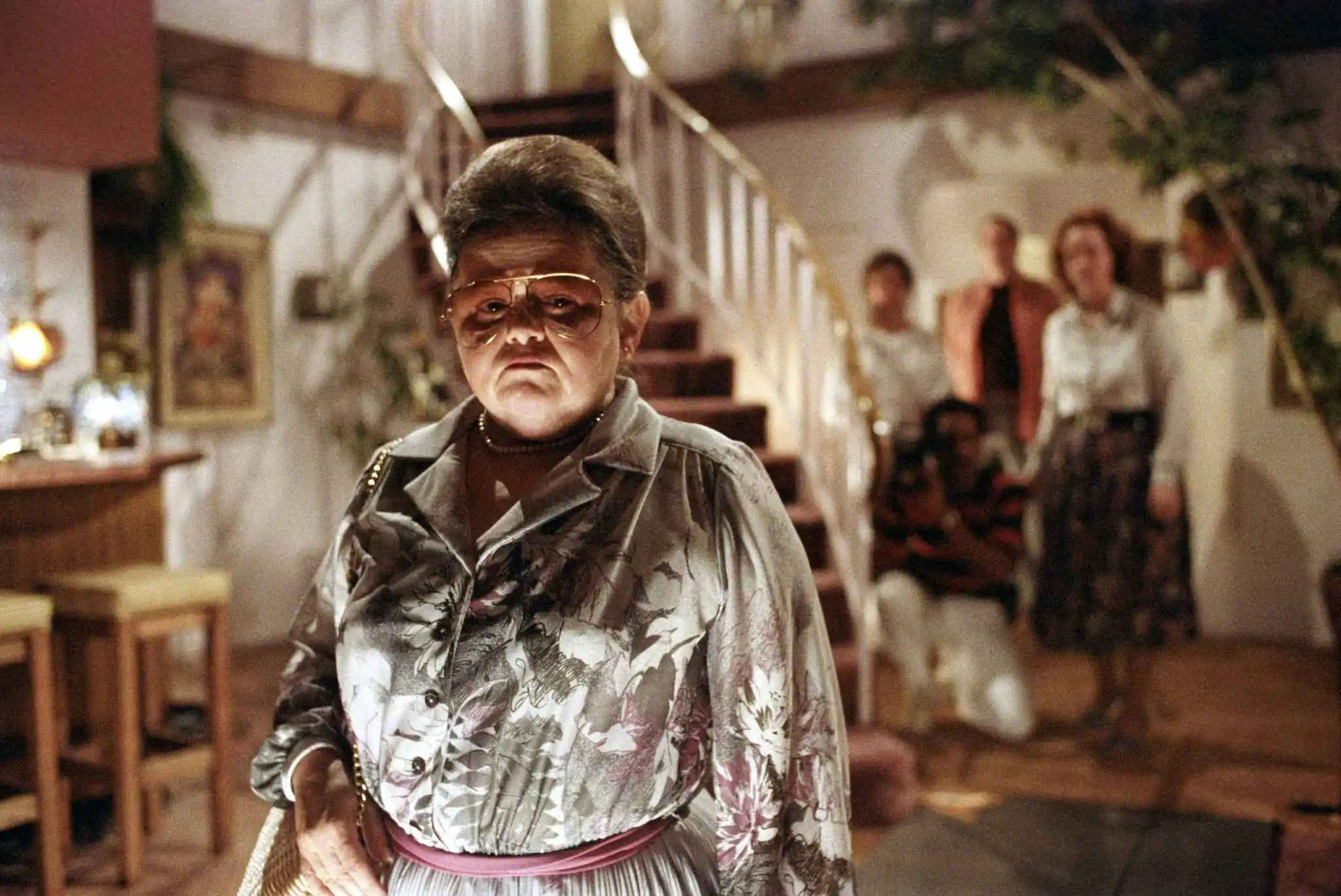
Poltergeist has become a classic of horror. It’s a rather atypical horror film. Spielberg’s idyllic suburbs, with their picturesque houses, tidy families, and charming everyday situations, lull the viewer into a false sense of security. So much so that when the evil forces animate the tree outside, attempting to snatch and devour young Robbie, we’re not fully convinced by what’s happening on screen. Only when little Carol Anne is pulled into her closet and her voice begins to emanate from the television does the sense of danger feel equally real on both sides of the screen.
The earlier moment of the spectral hand reaching out from the screen is also softened by the humorous punchline delivered by Carol Anne, who playfully exclaims, “They’re here…” Not to mention the comedic episodes featuring Diane Freeling, the mother, fantastically played by JoBeth Williams, who initially finds herself fascinated by the funny tricks of moving objects. The tone continues in the same vein. The poignant struggle to retrieve their daughter from the beyond, the fairy-tale visions of lost spirits wandering the Freeling home, and the amusing, albeit strange, scene with levitating objects in Carol Anne’s room coexist with terrifying episodes that leave smiles frozen on faces.
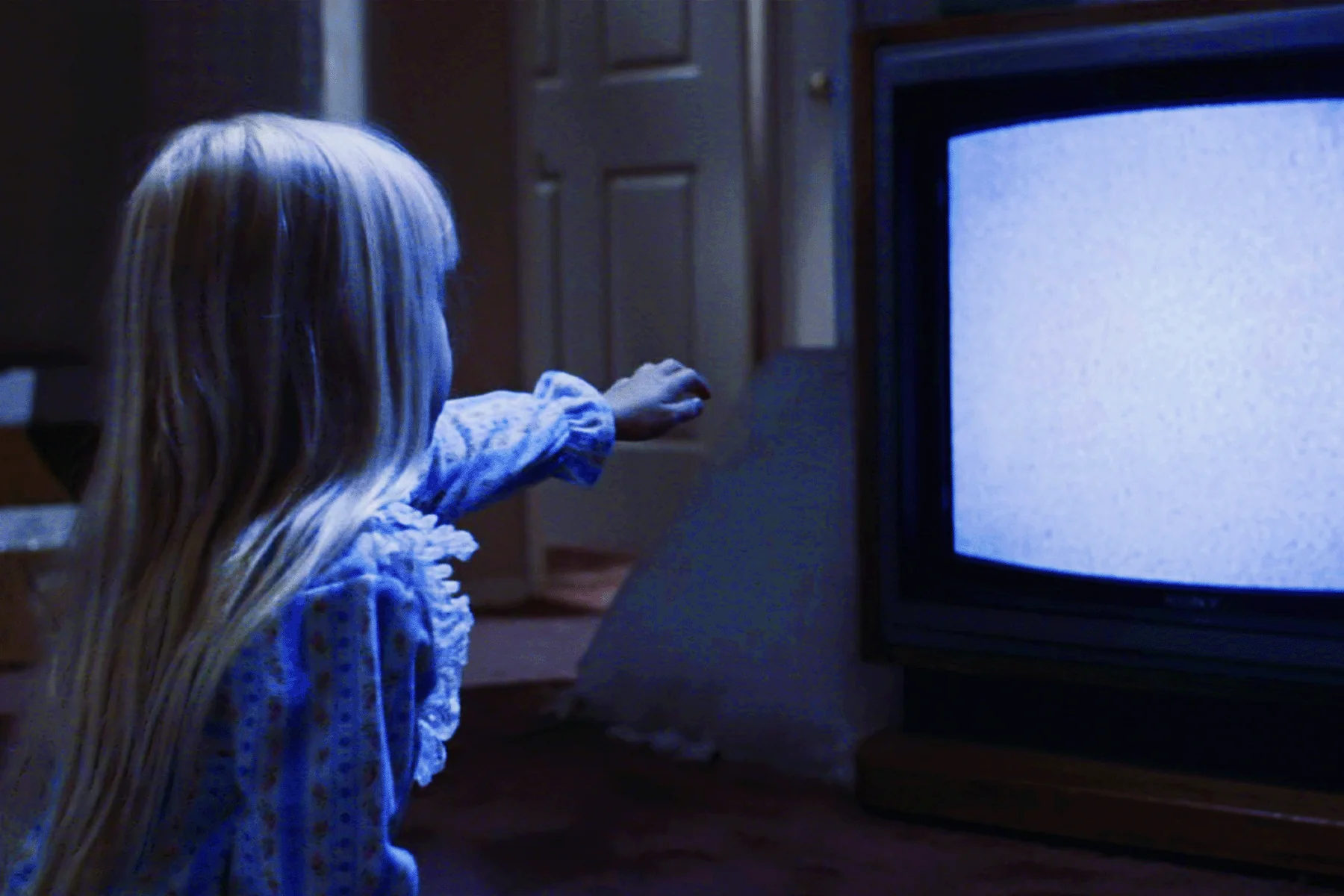
Since its premiere, this clear duality has been attributed to the filmmakers. On one side, there’s the gentle Spielberg; on the other, the macabre-loving Tobe Hooper. At first glance, Poltergeist seems to be a blend of two conventions, a clash of different sensibilities. It appears easy to distinguish Spielberg’s scenes from Hooper’s, and the abrupt mixing of the two can be attributed to Spielberg tempering Hooper’s directorial tendencies or vice versa. However, the truth is much simpler.
Spielberg had a decisive influence on the entire film. He was the main author of the script, he oversaw all the scenes, including the chilling ones, he cast the actors, directed on set, chose the music, supervised the production of special effects, and, along with Michael Kahn, edited Poltergeist. So what did Tobe Hooper actually do? Very little. You might remember the film Superprodukcja by Machulski, which included scenes of making a silly movie that was merely a cover for a meeting of gangsters from around the world. Rafał Królikowski asks, “What am I saying?” to which Janusz Rewiński sincerely replies, “Nothing. You’re just directing…” This is pretty much how Hooper’s role on Poltergeist played out.
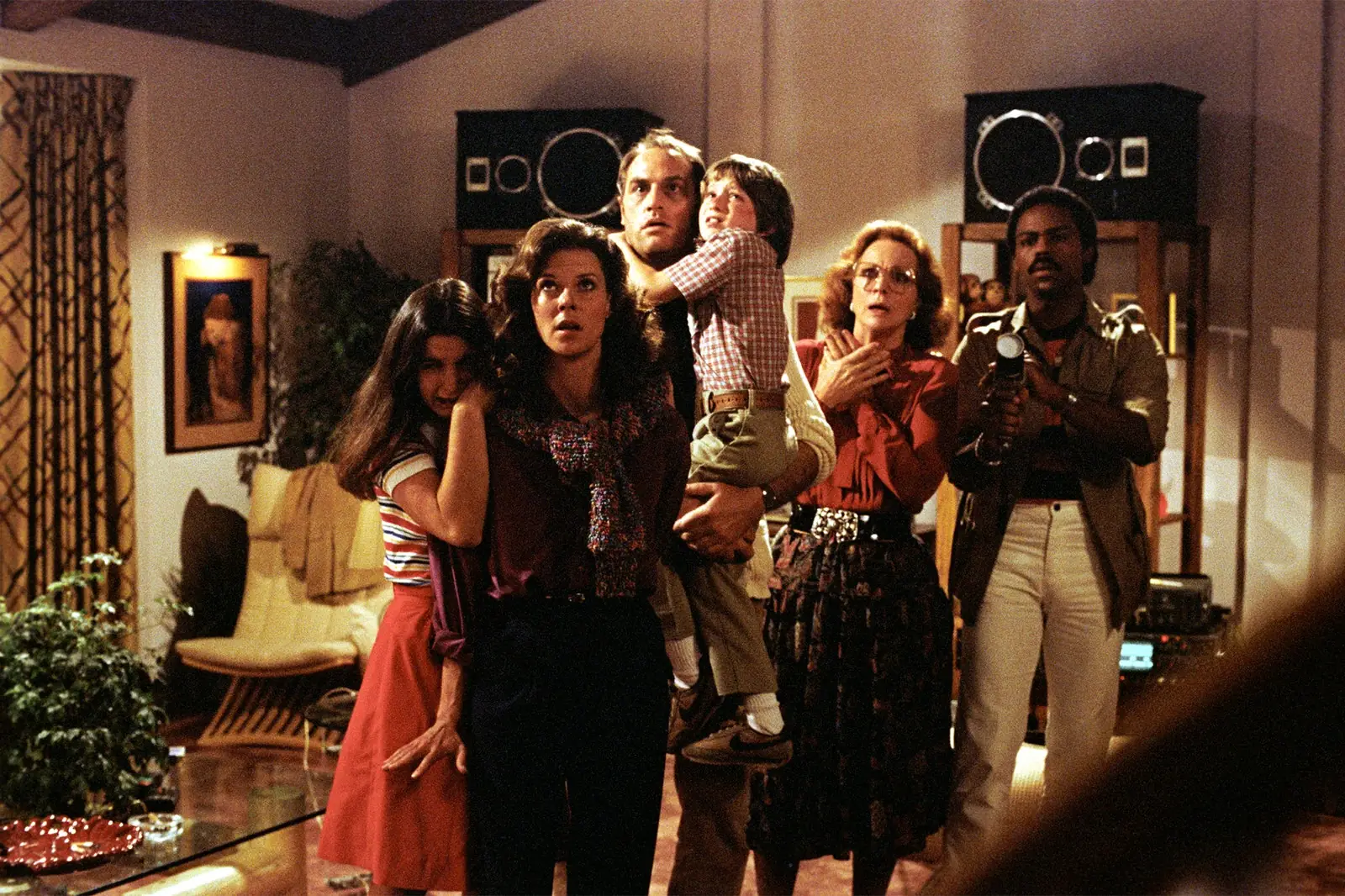
Though he was the nominal director responsible for the overall work and overseeing all production aspects, in reality, it was Spielberg who unceremoniously removed Hooper from the decision-making chain and turned him into a compliant executor of orders.
Did the film suffer from this? Not at all; many viewers were fooled, attributing the horror scenes to Hooper, particularly one involving a scientist brutally mutilating his own face, preceded by the grotesque sight of a crawling steak. The idea of tearing off the gel-like imitation of skin and muscle from a model’s face belonged to Spielberg.
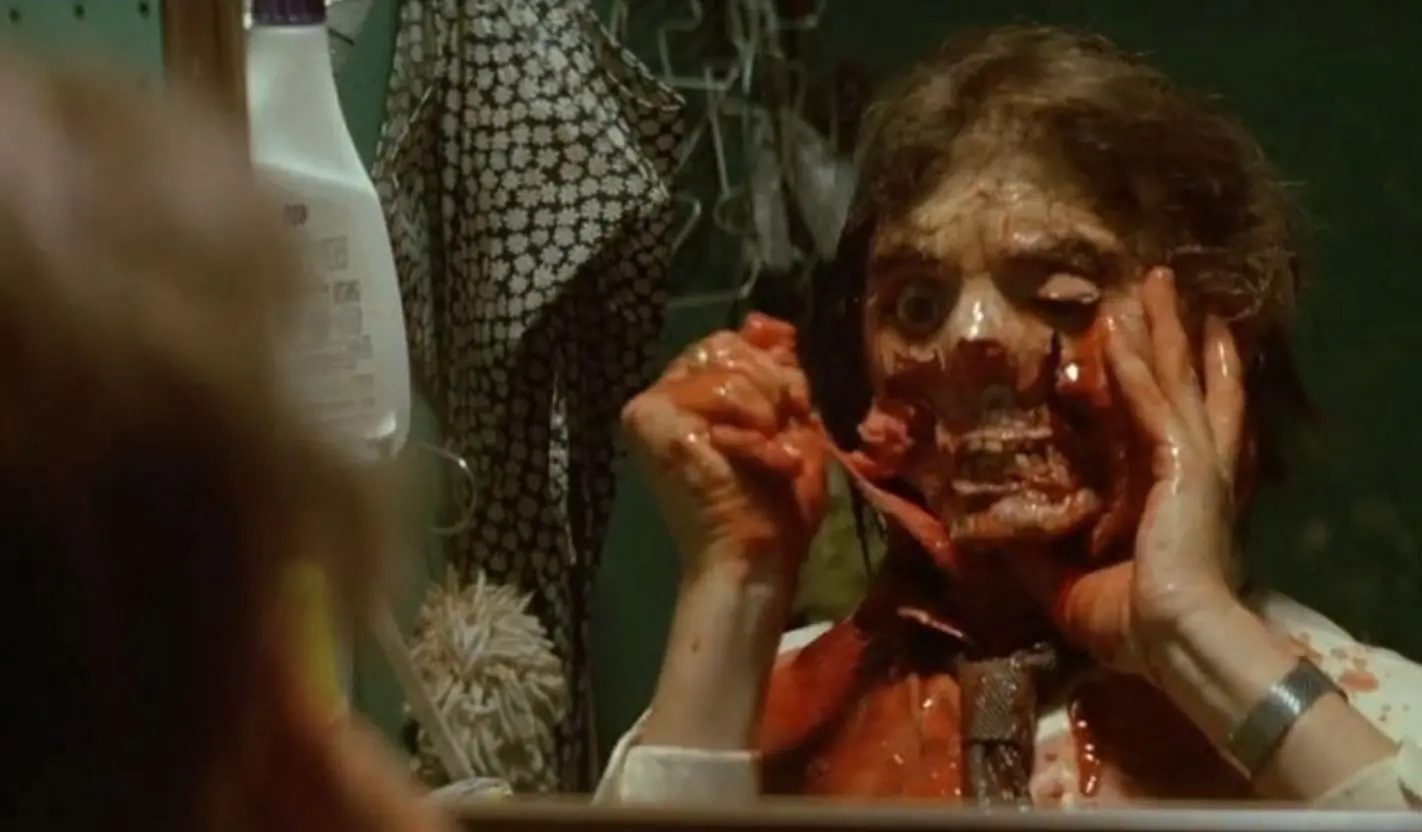
The nightmares from his own childhood found perfect expression in Poltergeist. As usual, he selected a credible cast by avoiding well-known names. Instead of his usual collaborator John Williams, he enlisted Jerry Goldsmith, who beautifully crafted a score reminiscent of Williams. He made Diane, Carol Anne’s heroic mother, the central character; in Close Encounters, E.T., and Empire of the Sun, child protagonists yearned for their mothers, while fathers were absent or unimportant. They preferred to abandon their families and venture into space, like Roy Neary. The enchanting scene with the luminous spirits could have seamlessly fit into Close Encounters. The same atmosphere, the same awestruck faces frozen in silent wonder, the same fairy-tale magic.

So why did the creator of Jaws hire a director who had no influence on the film? American director’s guild regulations prohibited producers from firing a director during filming and taking their place, as well as from directing two films simultaneously. Spielberg was working on E.T. at the same time, even though he only began shooting it during the post-production of Poltergeist. The premieres of both films were only a week apart. Spielberg later said, If E.T. was a whisper, then Poltergeist was a scream.
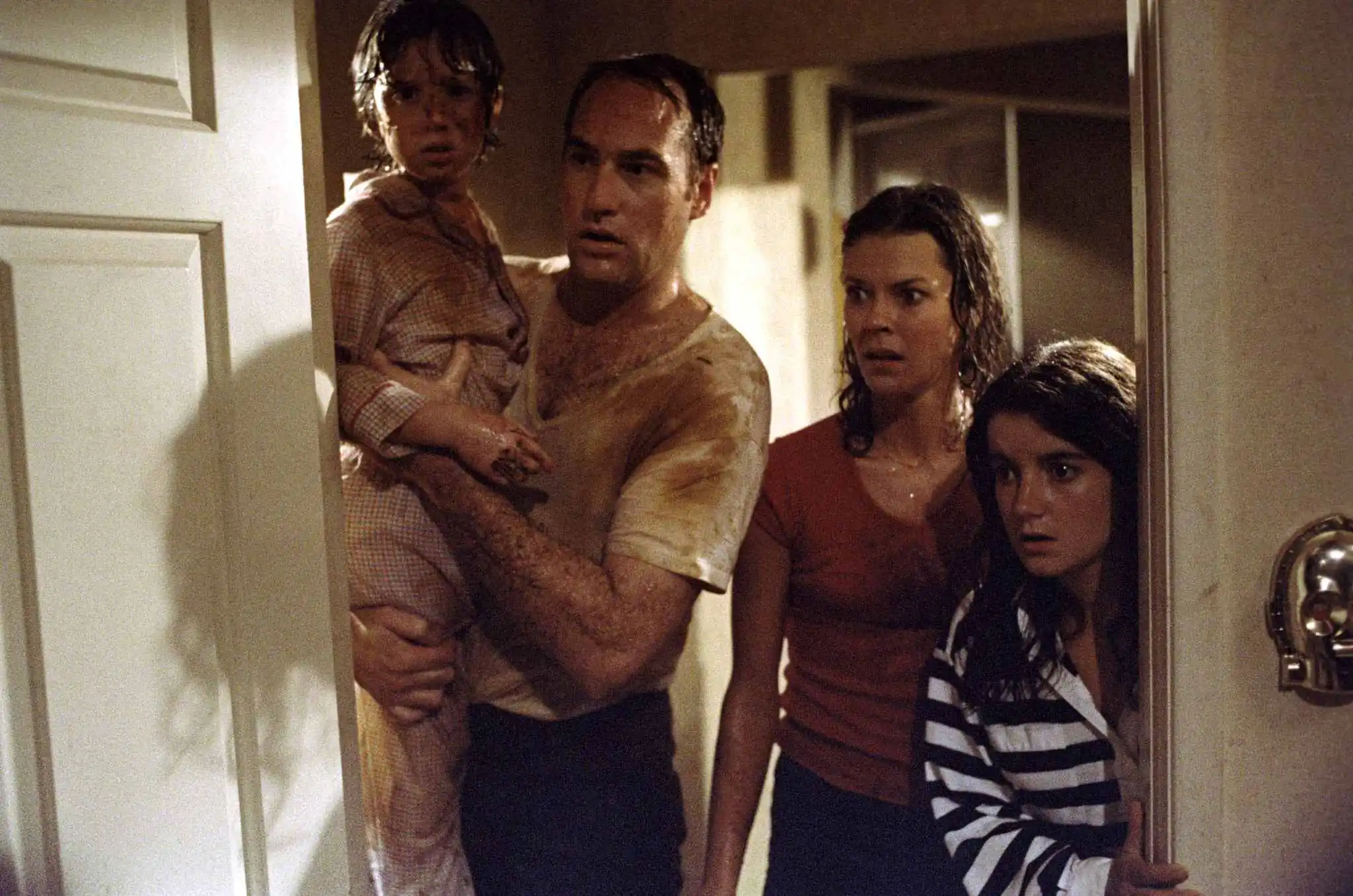
This brilliant tale of mischievous spirits spawned two much weaker sequels and a spin-off series, Poltergeist: The Legacy. It also inspired a new generation of filmmakers. Spielberg explained the supernatural phenomenon of ghosts and their presence in the human world through the monologue of Dr. Lesh. He posited that some people desire so much to remain among the living that they cannot grasp the reality of their own death and transformation into a spirit. This idea laid the groundwork for the scripts of The Sixth Sense by M. Night Shyamalan and The Others by Alejandro Amenábar. Additionally, the motif of a lurking threat within an ordinary television inspired Japanese writer Kōji Suzuki to pen a novel that led to Hideo Nakata’s cult classic horror film, Ring.
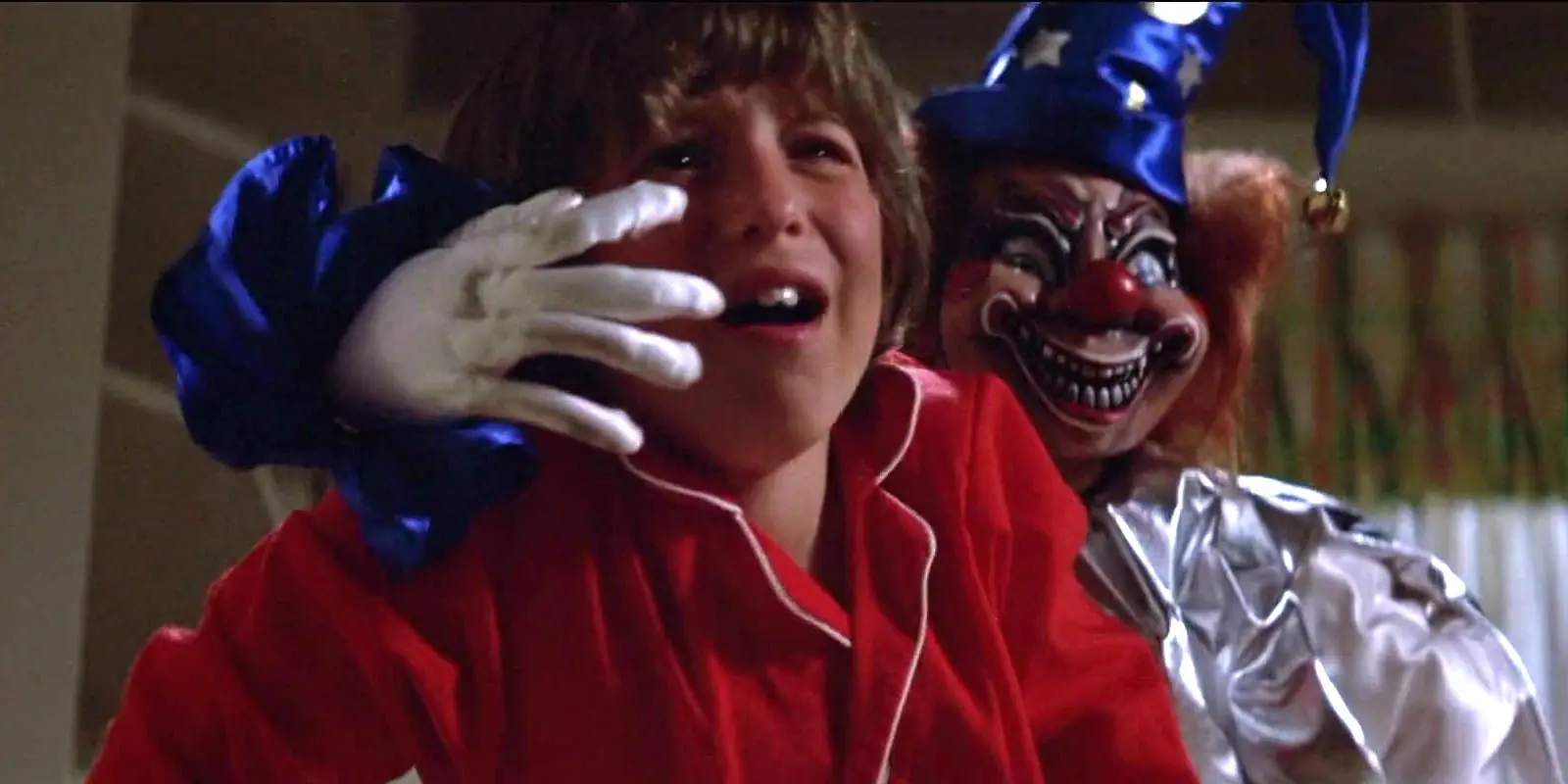
A tragic off-screen story looms over Poltergeist, which some view as a curse from the “other side.” The young actresses who played the two Freeling daughters are buried in the same cemetery, Westwood Memorial Park in Los Angeles. The older sister, Dominique Dunne, became involved with a man named John Sweeney, a nightclub owner in Los Angeles, shortly after the film was made. Their tumultuous relationship ended on October 30, 1982, when Sweeney, in a fit of jealousy, strangled the 23-year-old Dominique. Heather O’Rourke, who portrayed the blonde Carol Anne, also appeared in the two sequels, but in 1987, after filming the second installment, she fell ill with flu-like symptoms. Her condition worsened and was ultimately diagnosed as chronic intestinal inflammation. Despite her full-blown illness, she managed to appear in the third part of the series. She died on the operating table on February 1, 1988, at the age of 12, just four months before the release of Poltergeist III.

Traditionally, here’s a handful of interesting facts. For the role of Carol Anne, Drew Barrymore was brought to the audition by her parents, but Spielberg was looking for a girl with an angelic appearance. In return, Drew got the role of Gertie in E.T. The role of Diane Freeling was offered to Shirley MacLaine, who preferred to work alongside Jack Nicholson in Terms of Endearment. In both Poltergeist and E.T., Spielberg included several toy references to Star Wars. In one scene, Craig T. Nelson watches the film A Guy Named Joe (1943) with Spencer Tracy, about a pilot who dies, goes to heaven, and returns as a ghost.
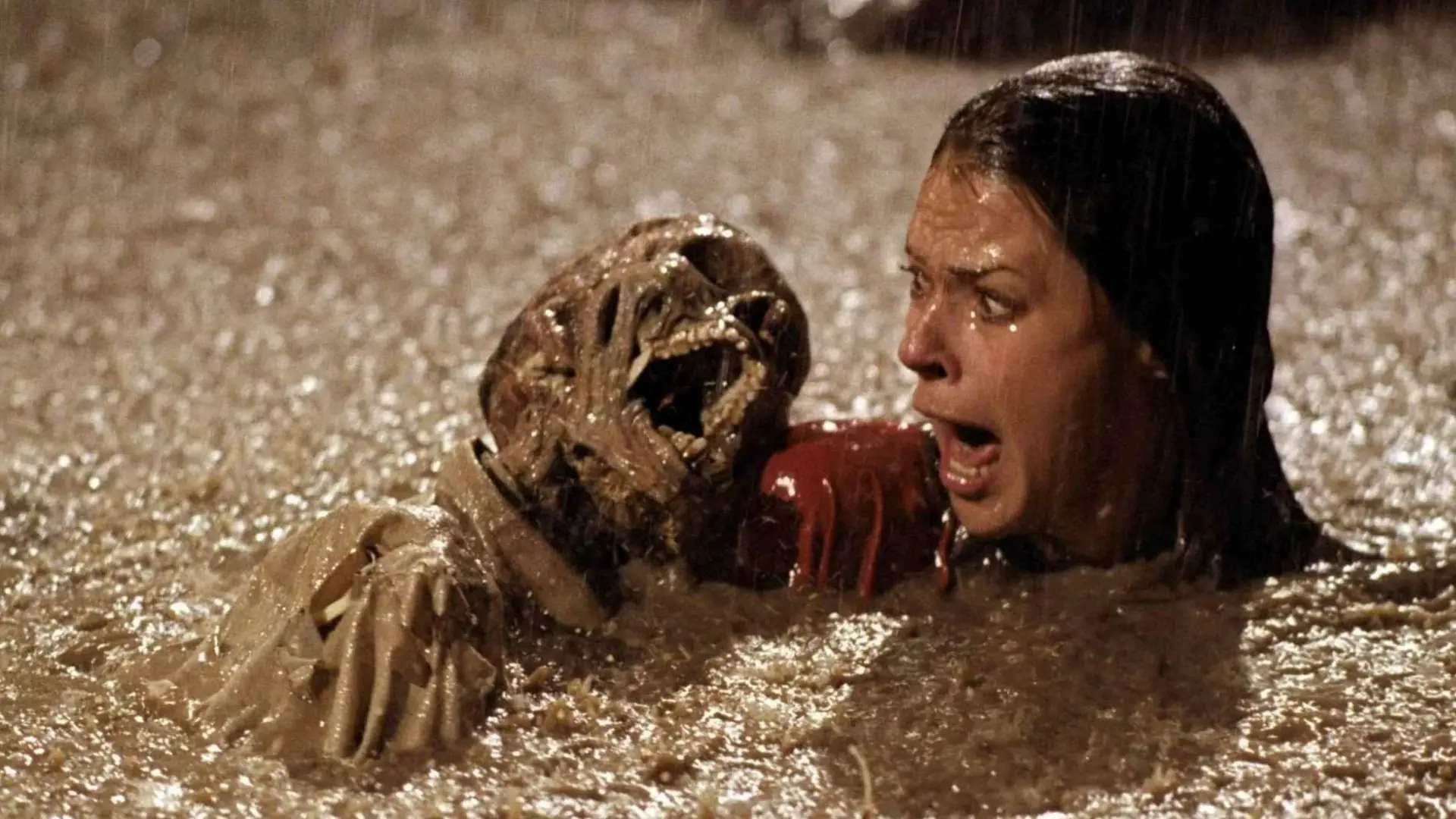
Regardless of the “spiritual” similarities, Spielberg already wanted to direct a remake of that film, which ultimately came out in 1989 as Always. He hired screenwriters Michael Grais and Mark Victor, and during the process, he mentioned his upcoming ghost film. Grais and Victor responded that instead of a dull story about a pilot ghost, they would prefer to write a script about a haunted house. And so it happened. The original cut of Poltergeist contained so many frightening scenes that the censors rated it R. Not wanting to forfeit the box office revenue from young audiences, Spielberg cut several of the scariest scenes to achieve a PG rating (parental guidance suggested). The house used as the exterior of the Freeling residence is located in Simi Valley, California, and is still inhabited by the same people who rented their property to Spielberg’s crew.

Horror films, offering a dose of safe fear, have undeniable therapeutic value. Looking at Spielberg’s filmography, Poltergeist was his last horror outing, filled with bold scenes that often approached the gore genre. Later thrillers, like those in Jurassic Park or War of the Worlds, were mere entertainments. Could it be that Poltergeist cured him of horror?
Spielberg moved away from childhood nightmares towards a much more realistic depiction of the horrors of World War II, the fight against slavery, and Middle Eastern terrorism. However, regardless of the artistic maturity manifest in his films, Steven Spielberg’s works continue to enchant and resonate, with only the hairstyles and cars aging over time.

